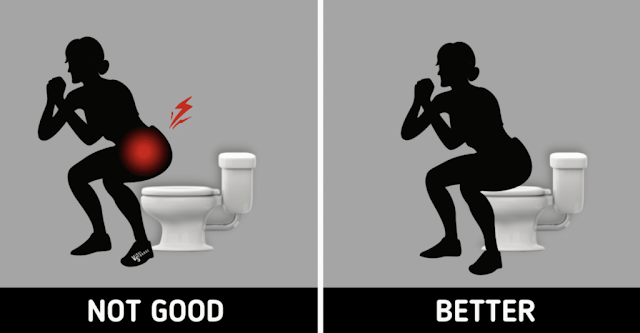When nature calls, everyone wants a quick and discreet solution, especially in public restrooms. But did you know that hovering or squatting over the toilet might not be as harmless as it seems? Let’s delve into why this habit could pose long-term health concerns.

Higher Risk of Urinary Tract Infections (UTIs)
Squatting over a toilet puts about 40% of tension on your pelvic floor muscles, preventing your bladder from fully relaxing. This incomplete relaxation means some urine can remain in your bladder when you stand up. The leftover urine can provide a breeding ground for bacteria, increasing the likelihood of UTIs.
A Persistent Urge to Pee
Hovering can also lead to the uncomfortable sensation of always needing to urinate. Residual urine in your bladder may accidentally leak when you sneeze, laugh, or jump, causing both embarrassment and the constant feeling of needing relief.
Bladder Weakness Over Time
Repeatedly squatting without fully relaxing your pelvic muscles can weaken them over time. This can hinder your bladder’s ability to contract and empty completely, leading to long-term bladder health issues.
The Case for a Full Squat

Instead of partially squatting, consider transitioning to a full squat. Sitting lower and fully engaging your muscles allows the pelvic floor and bladder to relax completely. This position promotes better bladder health and ensures more efficient emptying.
Next time you’re in a public restroom, think twice about hovering. Opting for a full squat could minimize potential risks and support your overall bladder health.
Share your thoughts!
Do you hover in public restrooms? What tips do you have for staying hygienic and healthy in shared spaces?
